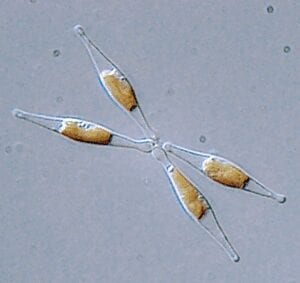Norwegian scientists have unveiled a low-power autofocus lens for mobile phone cameras
Mobile phone cameras generally aren’t known for their fantastic image quality. One of the reasons for this is the fact that most of them have fixed-focus lenses, as opposed to the autofocus lenses on all but the cheapest stand-alone cameras. The phone cameras partially compensate by using a small aperture to maintain a good depth of field, but this limits their use in low-light situations. Of course, their lenses could automatically focus by moving in and out (like those on larger cameras), but this would draw considerable power from the phones’ batteries. Now, however, Norwegian scientists have unveiled a low-power autofocus lens for mobile phone cameras, that works like the human eye.
A team from the SINTEF research organization began work on the project several years ago, and partnered with Norwegian optical tech company PoLight in 2006, to develop the technology. The working lens was publicly demonstrated on a mobile phone at the Mobile World Congress, earlier this year.
It incorporates a tiny “optical sandwich,” consisting of very thin glass plates, a polymer, a gel material and a metal alloy with flexible properties. While details on how it operates are scant, SINTEF reports that it involves an outside ring of material that expands and contracts (using barely any energy), causing the gel lens that it surrounds to change its shape accordingly – not unlike the lens in the human eye. The glass plates presumably sit on either side of that gel lens, to keep it contained and protected.
Read more . . .
Bookmark this page for “Mini autofocus lens” and check back regularly as these articles update on a very frequent basis. The view is set to “news”. Try clicking on “video” and “2” for more articles.









